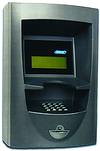
Due to the forecasted increases in the volume of smartcards, and the announcement of Visa, Mastercard and Europay (EMV) to adopt smartcard technology, there is sufficient justification for manufacturers involved in this market to justify the development of smartcard specific technologies. This is according to Clive Handley, Marketing Director for Transactions and Security at the VelocIT-e group, who explains further.

South African banks have committed to the EMV standard and this means that all future smartcard ATMs will comply with this standard. One thing is for sure, smartcards are the future, with their security features, multifunctionality, memory and intelligence. They are the way forward for financial cards and other activities such as gaming. The ATM first appeared on the scene in the mid-70s and as such is still relatively new. Smartcard readers/writers are available for most modern ATMs, but what about the older versions? Banks are not going to be willing to convert to smartcards if they have to renew their complete ATM network to support the new cards.
Most ATM manufacturers will tell you that it is possible to modify existing ATMs to accept smartcards. It is important however to note that the smartcard and the ATM are interdependent. Decisions will have to be made on what type of card will be used and what features on the ATM are going to be required to target the market.
The first decision when retrofitting ATMs to accept smartcards is to have a smartcard which will allow the customer the use of all existing ATMs which may mean that during the migration period smartcards still maintain the magnetic stripe and all other functionalities which the customer is used to. The client may want to use the smartcard in a different country or another continent and therefore the card must offer flexibility due to the wide range of read/write environment to which it may be subjected.
The second decision is to ensure that a combined magnetic stripe and smartcard reader/writer with a single card entry slot is fitted to the ATM. This will not be as straightforward as it seems and it might be necessary to modify the ATM to do this upgrade. Other aspects which will have to be considered is whether the ATM has sufficient power for the smartcard reader/writer and hardware interface? How will the heat generated by the reader/writer interface affect the ATM? What about EMC and electrostatic discharge? All these issues have to be examined and tested by the ATM vendor.
The most important issue to consider is the customer. It is necessary to keep the transaction simple and show the customer the enhanced options and benefits offered by the smartcard. A flexible display coupled with user-defined keys must simplify the ATM transaction procedure. Customer perception of smartcard technology can become tainted if the reader/writer fitted to an ATM has limited display and keyboard features. If the ATM limitation is not visible with magnetic stripe technology, the apparent smartcard functionality could receive poor publicity. The ability to show the customer the enhanced options offered by smartcards coupled with ease of customer response is very important.
There have been great advances made in ATM software. Coupled with modern software tools and increased memory availability this means that ATMs designed and built in the last 10 years or so can accommodate software applications designed to support smartcards.
As smartcards gain acceptance by the consumer in South Africa, banks will slowly proliferate the market with cashless smartcard ATMs. The new smartcard ATM will not need to handle cash. The cost of these new ATMs will be lower, affording the banks the opportunity to make more units available to the public to conduct their transactions.
Consumers are becoming more demanding in terms of payment systems - requiring time and location convenience, ease of use and protection against fraud. The challenges facing banks and financial institutions to deliver these services will fundamentally change, and the smartcard ATM will become integral to this concept in the future.
For further information contact Clive Handley, VelocIT-e, (011) 258 6900, [email protected]

© Technews Publishing (Pty) Ltd | All Rights Reserved